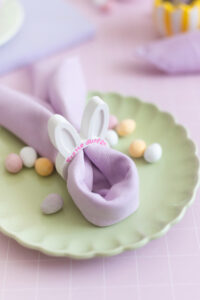
A blocking board is a tool used by knitters and crocheters to shape and size their finished projects. It is typically a flat, rigid board made from materials such as foam insulation board or plastic, with a grid of evenly spaced holes or lines. The grid helps to ensure that the project is blocked to the correct dimensions and shape.
To use a blocking board, the knitted or crocheted item is laid out on the board and stretched and pinned into place using blocking pins or T-pins. The pins hold the item in place while it dries, allowing it to retain its shape and size. The blocking process can help to improve the appearance of the finished project, making it look more professional and polished.
Blocking boards are available in a variety of sizes, with some featuring adjustable grids or interchangeable panels to accommodate different project sizes. Some blocking boards also come with storage cases or bags for easy transport and storage.
Overall, a blocking board is a useful tool for anyone who enjoys knitting or crocheting and wants to achieve a more polished finished product.
How to make
A blocking board is a useful tool for knitters and crocheters that helps to shape and size their finished projects. Making your own blocking board is a simple and affordable DIY project. Here are the steps you can follow to make your own blocking board:
Materials:
- Foam insulation board (available at hardware stores)
- Ruler or measuring tape
- Marker or pen
- Cutting tool (such as a utility knife or box cutter)
- Sandpaper
Instructions:
- Measure and mark the foam insulation board to the desired size for your blocking board. A common size is 36 x 48 inches, but you can adjust the size according to your needs.
- Cut the foam insulation board along your marked lines using a cutting tool such as a utility knife or box cutter. Make sure to cut the board on a flat surface and to keep your fingers away from the cutting blade for safety.
- Smooth out any rough edges or bumps with sandpaper.
- If desired, cover the foam insulation board with a layer of fabric or a clean sheet to provide a smooth surface for blocking.
- Your DIY blocking board is now ready to use!
Using a blocking board will help you achieve a more professional-looking finish on your knitting or crochet projects. When you finish your project, lay it flat on the blocking board and gently stretch and shape it to the desired size and shape. Then, pin it in place using blocking pins or T-pins to hold it in place until it dries.


